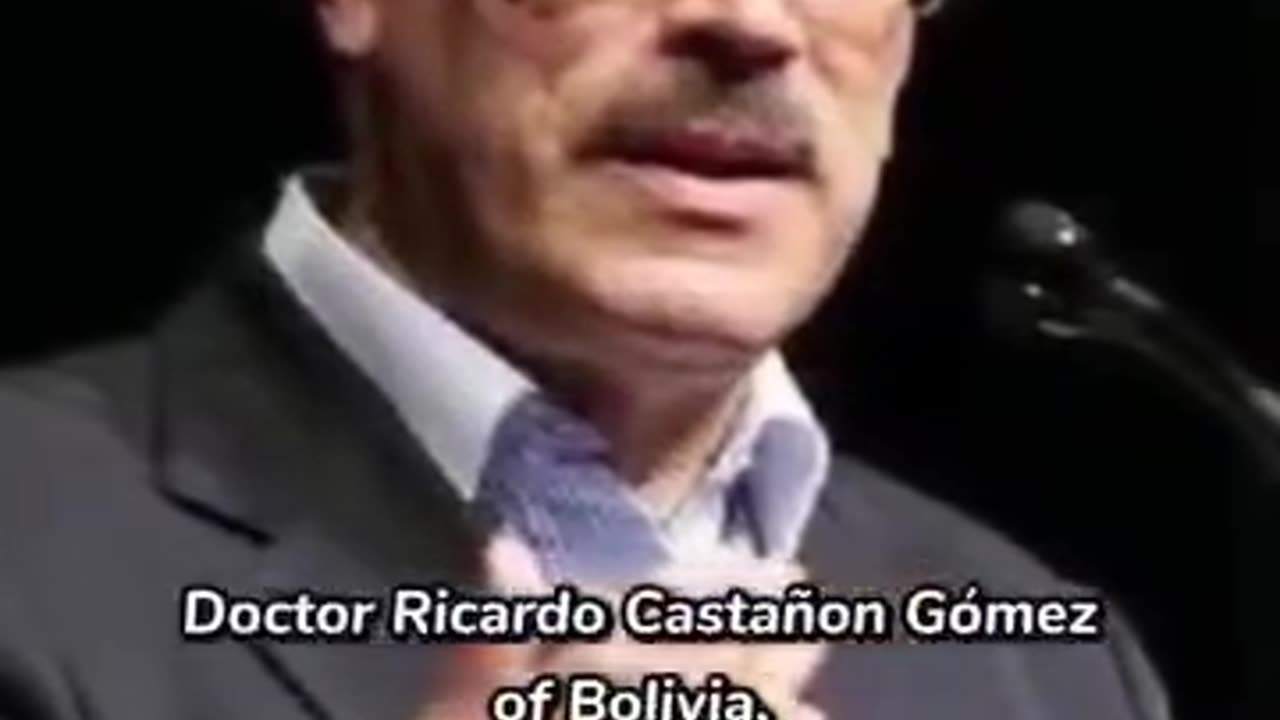Premium Only Content

Part 1: Eucharistic Miracle in Buenos Aires
"Did you know that one of the Eucharistic miracles that have undergone the most extensive scientific analysis happened under the auspices of Pope Francis, at that time Archbishop Jorge Bergoglio?
The miracle occurred on August 18, 1996, in the Church of Santa María y Caballito Almagro, in Buenos Aires, Argentina.
At seven o'clock in the evening on August 18, 1996, Fr. Alejandro Pezet was saying Holy Mass at a Catholic church in the commercial center of Buenos Aires.
As he was finishing distributing Holy Communion, a woman came up to tell him that she had found a discarded host on a candleholder at the back of the church.
On going to the spot indicated, Fr. Alejandro saw the defiled Host. Since he was unable to consume it, he placed it in a container of water and put it away in the tabernacle of the chapel of the Blessed Sacrament.
On Monday, August 26, upon opening the tabernacle, he saw to his amazement that the Host had turned into a bloody substance.
He informed Cardinal Jorge Bergoglio, who would become Pope Francis, who gave instructions that the Host be professionally photographed.
The photos were taken on September 6th. They clearly show that the Host, which had become a fragment of bloody flesh, had grown significantly in size.
After three years, the bloody tissue had not decomposed. This is truly extraordinary and virtually impossible to explain through natural causation, particularly because no special attempt was made to preserve it.
Since the original photographs revealed the complete lack of decomposition, Archbishop Bergoglio asked that the bloody tissue be scientifically examined.
In 1999, a scientific investigation was begun under the leadership of Doctor Ricardo Castañón Gómez of Bolivia, a clinical psychologist who specializes in brain chemistry.
Eight scientists were involved in this investigation from four continents.
On October 21, 1999, Doctor Castañón Gómez brought a sample to a forensic laboratory in San Francisco to do analysis.
On January 28, 2000, scientists found fragments of human DNA in the sample, but not enough to produce amplified DNA.
Doctor Robert Lawrence, a top histopathologist who studies tissues, found human skin and white blood cells upon further analysis.
He stated in an interview that the white blood cells were living at the time they were collected, though they normally die within two hours after being taken from a body.
In 2001, Doctor Castañón Gómez sent samples to Doctor Edoardo Linoli in Arezzo, Italy, who said the sample was heart tissue and had white blood cells."
-
 1:10:26
1:10:26
Sean Unpaved
3 hours agoJalen Hurts & Eagles COLLAPSE In LOSS vs. Cowboys | UNPAVED
16.5K2 -
 2:00:25
2:00:25
Steven Crowder
6 hours agoNo Influencer Safe: New X Update Exposed A Major Psyop
422K260 -
 17:38
17:38
Professor Nez
3 hours agoTHIS will HAUNT Jasmine Crockett for Years...
14.9K20 -
 56:36
56:36
The Rubin Report
4 hours agoTense Moment at Trump-Mamdani Meeting That No One Predicted
46.7K74 -
 9:34
9:34
The White House
4 hours agoFirst Lady Melania Trump Welcomes the Official 2025 White House Christmas Tree
35.2K16 -
 LIVE
LIVE
LFA TV
18 hours agoLIVE & BREAKING NEWS! | MONDAY 11/24/25
1,717 watching -
 1:01:32
1:01:32
VINCE
6 hours agoNew Info Blows the Lid Off The Butler Assassination Attempt | Episode 175 - 11/24/25 VINCE
267K245 -
 1:46:29
1:46:29
The Mel K Show
4 hours agoMORNINGS WITH MEL K - A Time to Choose: The People Must Reclaim Power 11-24-25
32.2K13 -
 1:23:10
1:23:10
The Shannon Joy Show
4 hours agoMarjorie Taylor Greene DUMPS Trump, Defects To ‘America First’ Setting Up NEW Paradigm For 2028 Presidential Election
21.6K15 -
 53:41
53:41
Grant Stinchfield
21 hours ago $2.92 earnedABC SETUP: Michael McCaul Falls for Martha Raddatz Trap on Live TV!
21.2K2